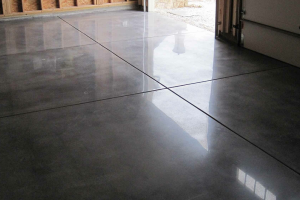Every mobile rack tells a story—not just of steel and engineering, but of human adaptation in spaces where efficiency and dignity must coexist. In Singapore’s industrial estates, where 200,000 logistics workers navigate an increasingly automated landscape, these moving storage systems represent something more profound than space optimisation: they embody our evolving relationship with work and the quiet revolution happening in warehouses globally.
The Geography of Constraint
In Singapore’s tightly orchestrated industrial symphony, space isn’t just expensive—it’s sacred. With warehouse vacancy rates at 8.4% as of Q4 2023 and planned supply reaching only 885,000 square metres, every cubic metre becomes a meditation on scarcity. Here, mobile storage systems aren’t a luxury; they’re survival mechanisms for businesses in increasingly compressed spaces.
Walking through a facility equipped with movable racking systems feels like witnessing architecture in motion. The racks glide along floor-mounted rails with meditative precision, compacting and expanding like the city itself—dense when necessary, spacious when possible. It’s choreography that mirrors Singapore’s urban planning: maximum utility from minimum space.
The Human Choreography
Behind every mobile rack system stands a warehouse worker whose daily routine has been quietly transformed by technology they rarely get to choose. The introduction of mobile systems doesn’t just change storage; it changes the rhythm of work itself.
Consider the traditional warehouse walker covering 15 kilometres daily, navigating fixed aisles. Now imagine that same person in a space where aisles themselves move, where a button press can create or eliminate pathways. The physical demands shift, but so does the fundamental relationship between worker and workspace.
Compact Mobile Shelving: The Architecture of Efficiency
Compact mobile shelving systems can increase storage capacity by up to 100% within the same footprint—impressive until you consider its human implications. In Singapore’s context, where logistics represents $67 billion of annual economic activity, this efficiency translates to preserved jobs, where every square metre saved potentially maintains employment.
The mechanics are elegantly simple:
• Manual systems: Hand-operated wheels that require physical effort but offer complete worker control
• Mechanical assist: Reduce physical strain through gear mechanisms whilst maintaining human operation
• Motorised systems: Electric motors activated by simple controls, accessible to workers regardless of physical capability
• Automated solutions: Computer-controlled movement that responds to warehouse management systems
Each option represents a different philosophy about the role of human labour in an increasingly automated world.
The Mobile Compactor Evolution
Mobile compactor systems emerged from a fundamental question: What if storage could be as flexible as the inventory it contains? In Singapore’s pharmaceutical and electronics sectors—where space costs exceed £30 per square foot annually—this flexibility becomes financially transformative.
The technology allows aisle creation on demand. Where traditional systems require permanent aisles between every storage row, mobile systems compress storage into solid blocks, creating access aisles only when needed. It’s storage density that breathes with operational requirements.
Rolling Rack Systems: Democracy in Motion
Rolling rack systems represent the most democratic of mobile storage solutions. Unlike automated systems requiring technical expertise, rolling racks can be moved by anyone with basic training. There’s something profound about storage that responds to human touch, workers maintaining agency in automated environments.
In Singapore’s logistics workforce (median age 42), this accessibility becomes crucial. The systems accommodate different physical capabilities whilst maintaining the dignity of manual work.
High-Density Mobile Storage: The Singapore Solution
High-density mobile storage has found particular resonance in Singapore’s unique industrial landscape. With warehouse rents rising 7.4% year-on-year in Q4 2023, the mathematics becomes compelling:
• Cost efficiency: Doubling storage capacity costs less than acquiring additional warehouse space
• Space scarcity: Additional warehouse footage is increasingly unavailable in Singapore
• Environmental alignment: Optimising existing space supports carbon neutrality goals by 2050
• Industrial densification: Warehouse equivalent of urban infill development
The Stories Between the Stats
Behind the impressive efficiency statistics lie more complex narratives:
• Warehouse workers: Can now access inventory previously requiring dangerous ladder climbs
• Logistics coordinators: Reorganise storage configurations as seasonal demands shift
• Small business owners: Afford Singapore warehouse space because mobile systems maximise every square metre
• Older workers: Maintain employment dignity through accessible, user-friendly technology
• Safety improvements: Reduced workplace injuries through the elimination of high-reach storage
Implementation Realities: The Human Cost of Efficiency
Installing mobile storage systems requires more than engineering; it requires social engineering:
• Worker retraining: Operational procedures require complete revision
• Muscle memory: Fixed storage layouts must be consciously unlearned and rebuilt
• Multicultural challenges: Training materials appear in English, Mandarin, and Malay
• Universal adaptation: The gentle hum of electric motors becomes the new workplace rhythm
The Future of Flexible Space
As Singapore prepares for a record warehouse supply in 2025—0.85 million square metres coming onstream—competitive advantage will belong to facilities that adapt quickly to changing needs. Mobile storage systems offer this adaptability, but their real value lies in preserving human agency within efficient industrial systems.
The technology succeeds not by replacing human workers but by amplifying their capabilities. In a logistics industry employing 200,000 people, this distinction matters. Every mobile system installed is a statement about the future we’re building—where efficiency and humanity coexist.
The Quiet Revolution Continues
Walking through Singapore’s industrial estates today, you might not notice the mobile rack systems humming quietly in the background. But they’re there, moving through night shifts, adjusting for tomorrow’s deliveries, creating space where none existed. They represent infrastructure that adapts rather than constrains, technology that serves rather than displaces.
In the end, the most profound revolution isn’t always the loudest. Sometimes it’s as quiet as a mobile rack gliding along its rails, carrying not just inventory, but the hopes of workers who’ve found dignity in the careful choreography of modern logistics.





